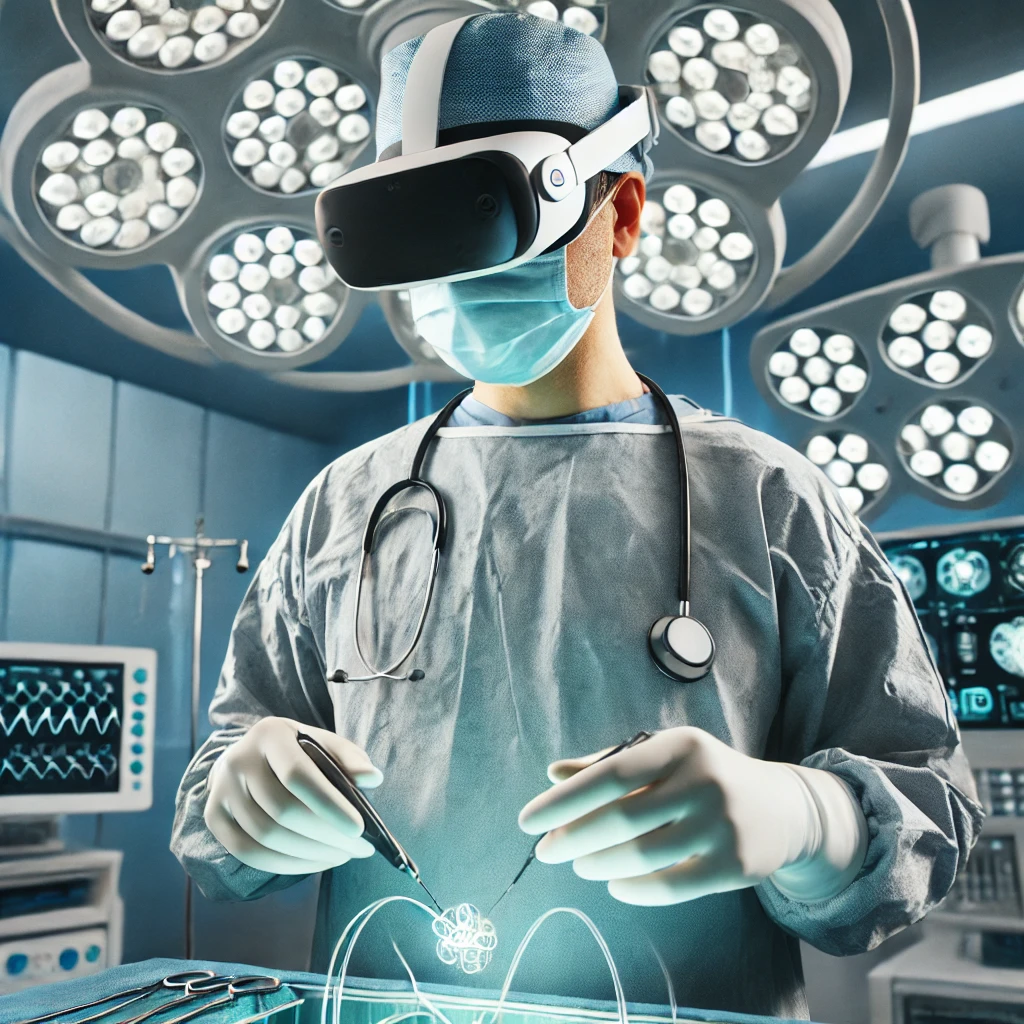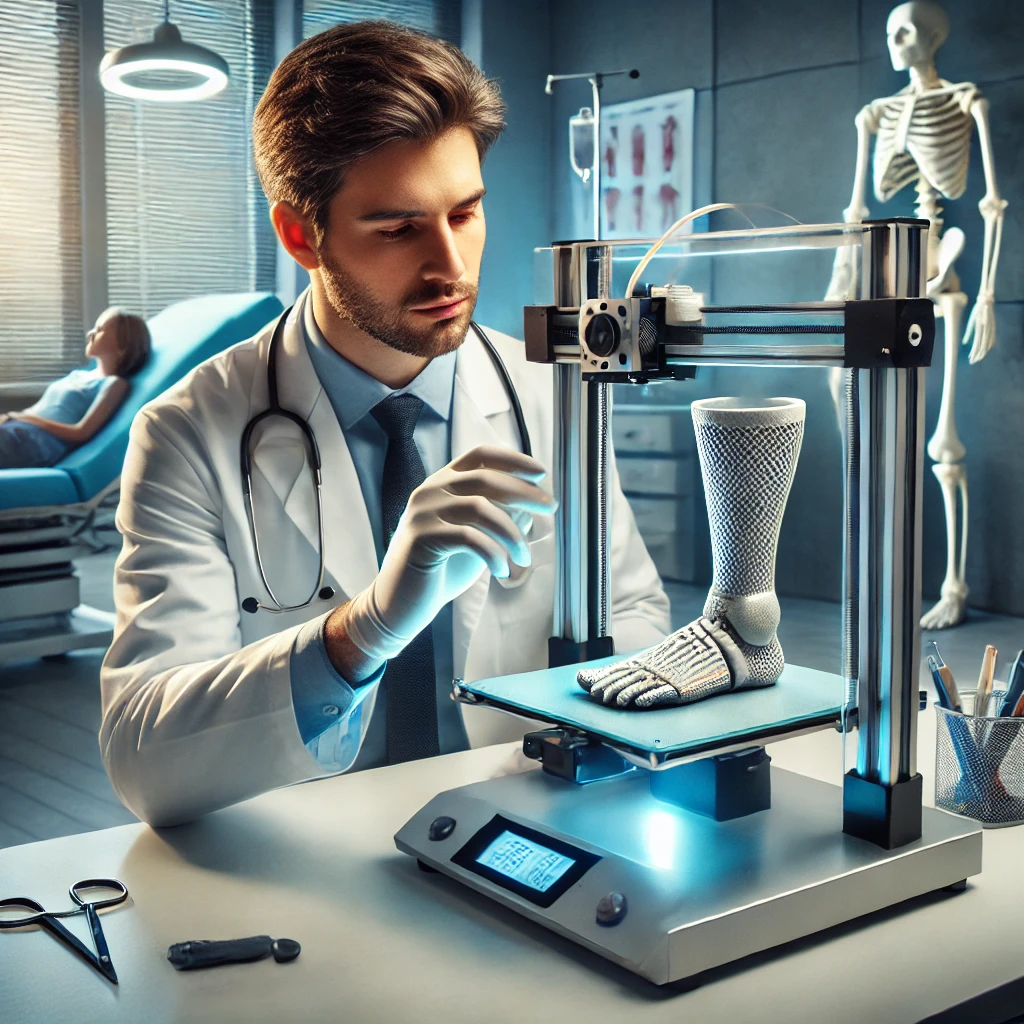The healthcare industry is experiencing a massive transformation, driven by groundbreaking emerging technologies. As global healthcare demands surge, propelled by aging populations and rising chronic illnesses, the need for innovation has become more urgent than ever. In the beginning of 2020, the COVID-19 pandemic accelerated digital adoption, showcasing the power of technology to bridge healthcare gaps during a global crisis. From virtual doctor consultations to AI-driven diagnoses, emerging technologies are redefining patient care, improving outcomes, and enhancing accessibility.
In this article, we will explore key trends in healthcare technology, from telemedicine connecting patients to doctors remotely, to virtual reality revolutionizing patient care. These innovations are not just futuristic concepts but solutions already improving lives today. By understanding these trends, healthcare providers, patients, and decision-makers can better adapt to a rapidly evolving landscape, one that prioritizes precision, efficiency, and patient-centric care. Lets dive in.
Telemedicine
Telemedicine has emerged as a cornerstone of modern healthcare, transitioning from just an idea to a mainstream solution. Fueled by the pandemic’s demands for safe, remote care, virtual consultations grew by over 38x in 2020 alone, according to McKinsey & Company. This shift has brought healthcare access to rural and underserved areas, overcoming geographical barriers that once limited patients’ ability to see specialists.
Beyond convenience, telemedicine is enhancing outcomes. Remote chronic disease management allows doctors to monitor patients’ conditions in real-time, reducing hospital readmissions. Mental health care has also benefited immensely, with virtual therapy breaking stigma and improving access to mental health professionals. Emerging trends include integrating AI tools to assist doctors with faster diagnostics, automated follow-ups, and predictive analytics, streamlining care delivery.
Looking ahead, telemedicine will continue evolving with tools like wearable health trackers and IoT devices feeding data to healthcare providers. As internet accessibility improves worldwide, virtual healthcare is poised to become a fundamental component of modern medical practice, ensuring every patient receives timely, high-quality care no matter where they are.

Wearable Health Tech
Wearable health technology has evolved from simple step counters to advanced devices capable of tracking critical health metrics in real time. Fitness trackers and smartwatches, like the Apple Watch and Fitbit, now monitor heart rate, oxygen saturation, and even detect irregular heart rhythms, such as atrial fibrillation, enabling early intervention for serious conditions. According to GlobeNewswire, global wearable technology in healthcare market value is likely to reach $169 billion by 2029, underscoring their growing impact.
Innovations like continuous glucose monitors (CGMs) empower diabetics to track blood sugar levels seamlessly, while advanced biosensors monitor stress levels, sleep patterns, and calorie expenditure. These tools promote preventative care by offering actionable insights, encouraging healthier lifestyles, and reducing emergency visits. Moreover, wearables are increasingly integrated with telehealth platforms, sending real-time health data to physicians for proactive care.
The future holds even more promise, with wearables poised to detect early signs of diseases like Parkinson’s and Alzheimer’s through subtle movement changes. By making healthcare more personalized and data-driven, wearable health tech is transforming individuals into active participants in their wellness journey.
Virtual Reality (VR) and Augmented Reality (AR)
Virtual reality (VR) and augmented reality (AR) are revolutionizing healthcare education and treatment, creating immersive experiences that enhance precision and outcomes. In medical training, VR allows students and surgeons to practice complex procedures in risk-free, simulated environments.
Beyond training, VR is transforming patient care. For instance, VR-based therapy is being used to manage chronic pain by distracting patients during procedures or helping burn victims cope with discomfort. A Cedars-Sinai study found VR reduced pain scores by up to 24%. Similarly, VR is used in PTSD therapy, offering exposure therapy in controlled, virtual settings.
AR, on the other hand, assists surgeons by overlaying critical data, such as anatomical structures, onto the patient during procedures. Platforms like Microsoft’s HoloLens enable real-time, 3D visualization, increasing precision in surgeries. From reducing anxiety to enhancing surgical accuracy, VR and AR are ushering in a future where healthcare is smarter, safer, and more immersive.

Blockchain Technology
Blockchain technology is transforming how healthcare systems handle data, ensuring security, transparency, and efficiency in a field that demands utmost trust. By storing medical records on decentralized, tamper-proof ledgers, blockchain eliminates risks of data breaches and unauthorized modifications. According to a study, 70% of healthcare executives view blockchain as critical for managing sensitive patient data.
One key benefit of blockchain is secure data sharing. Providers can seamlessly share patient information across systems while maintaining privacy through encrypted, permission-based access. This not only reduces duplicate tests and errors but also improves continuity of care. Additionally, blockchain combats insurance fraud, estimated to cost billions annually, by verifying claims and patient identities in real time.
Companies like Guardtime and Avaneer Health are pioneering blockchain solutions to streamline healthcare operations, from supply chain tracking for pharmaceuticals to ensuring the integrity of clinical trial data. As adoption grows, blockchain will enhance data trust and transparency, empowering patients and providers to manage healthcare records securely and efficiently.
Artificial Intelligence (AI)
Artificial Intelligence (AI), arguably the tool with the most potential to revolutionize healthcare, is making an impact by enhancing speed, accuracy, and innovation. AI-driven tools, such as those using deep learning algorithms, are diagnosing diseases like cancer and heart conditions with precision. For instance, Google’s AI system can detect breast cancer in mammograms with 94.5% accuracy, surpassing traditional methods.
AI’s impact extends to predicting outbreaks by analyzing vast datasets of global health trends, enabling early intervention for diseases like COVID-19. In hospital settings, AI optimizes workflows by predicting patient admissions, reducing wait times, and improving resource allocation.
In drug discovery, AI accelerates research timelines, analyzing complex biological data to identify promising treatments. Companies like AION Labs and Pfizer have shortened drug development cycles, significantly reducing costs. Personalized medicine is another frontier, where AI tailors treatments based on an individual’s genetic and health data, improving outcomes and minimizing side effects.
AI’s role in healthcare is rapidly evolving, offering solutions that are smarter, faster, and more patient-centric. By harnessing this technology, healthcare providers can tackle global challenges while improving lives.
Robotics in Healthcare
Robotics is also transforming healthcare by enhancing precision, efficiency, and patient outcomes. In surgery, robotic-assisted systems like the da Vinci Surgical System allow surgeons to perform minimally invasive procedures with unmatched precision. These systems reduce blood loss, minimize scarring, and accelerate recovery times, improving patient satisfaction. The global surgical robotics market is projected to reach $7.42 billion by 2030 (Grand View Research), highlighting its growing adoption.
Beyond surgery, robotics is addressing critical staffing shortages in elderly care and rehabilitation. Assistive robots, like Robear in Japan, help lift and transfer patients safely, reducing caregiver strain while enhancing patient comfort. Rehabilitation robots are also transforming physical therapy by assisting stroke survivors and individuals with mobility impairments to regain movement through repetitive, targeted exercises.
Advancements in prosthetics and robotic exoskeletons are improving quality of life for individuals with disabilities. Companies like Ekso Bionics and ReWalk have developed exoskeletons that enable paralyzed individuals to stand and walk again, merging robotics with human potential. As robotics evolves, it is set to play a vital role in providing personalized care, improving accessibility, and transforming patient recovery.
3D Printing
3D printing is redefining healthcare by offering affordable, personalized solutions for medical devices, implants, and even bioprinted tissues. The technology allows for the creation of highly customized prosthetics and orthopedic implants tailored to individual patient anatomy, improving comfort and outcomes. For example, 3D-printed dental structures have reduced production time and costs while offering a precise fit for patients.
One of the most groundbreaking applications is bioprinting. Researchers are using 3D printers to layer bioinks, composed of living cells, to create tissues and, in the future, organs like kidneys or livers.
3D printing also plays a critical role in surgical preparation. Surgeons can create anatomical models of patients’ organs to plan and practice complex procedures, reducing risks and improving precision. With its cost-efficiency and versatility, the 3D printing market in healthcare is expected to grow to $5.84 billion by 2028 (Allied Market Research).
From prosthetics to organ regeneration, 3D printing is leading healthcare toward a future of personalized, accessible, and innovative medical solutions.

The Internet of Medical Things (IoMT): A Connected Health Network
The Internet of Medical Things (IoMT) is creating a seamlessly connected healthcare ecosystem by integrating devices, sensors, and smart tools to share real-time patient data. These connected technologies bridge the gap between patients and providers, enabling remote patient monitoring (RPM) and timely interventions. For instance, IoMT devices like smart blood pressure cuffs and glucose monitors allow patients to track their vitals at home, with data sent directly to healthcare providers for analysis. According to AllTheResearch, the IoMT market is expected to reach $254 billion by 2026, underscoring its rapid adoption.
In hospitals, IoMT enhances efficiency through smart devices like RFID-enabled equipment trackers, automated medication dispensers, and patient-monitoring systems that streamline workflows and reduce errors. Predictive care is another key benefit, connected devices powered by AI can analyze trends to detect early signs of health deterioration, preventing critical events before they occur.
As IoMT grows, its role in improving patient outcomes, reducing costs, and enabling proactive care will become even more essential. From homes to hospitals, this network of connected tools is shaping a future where healthcare is smarter, more responsive, and patient-focused.
A Healthier, Tech-Focused Future
The healthcare industry stands at the forefront of technological innovation, with tools like telemedicine, wearable health devices, robotics, and AI reshaping how care is delivered, monitored, and improved. These advancements not only make healthcare more accessible and efficient but also enable personalized solutions that enhance patient outcomes and reduce costs.
As we look ahead, the limitless possibilities of technologies like blockchain, 3D printing, and the Internet of Medical Things offer a vision of smarter, data-driven healthcare that puts patients at the center. From diagnosing diseases earlier to revolutionizing drug discovery, these innovations promise a future where healthcare is more effective, equitable, and proactive.
Embracing these changes requires collaboration between patients, providers, and innovators to ensure technology is used responsibly and inclusively. By leveraging these transformative tools, we move closer to a world where healthcare is not just reactive but predictive, personalized, and truly connected.

